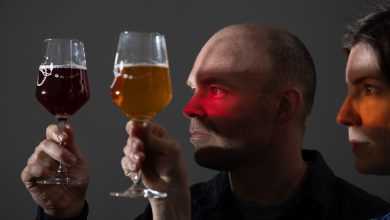In Africa, a Mix of Shots Drives an Uncertain Covid Vaccination Push

KAMAKWIE, Sierra Leone — In the tumbledown concrete room that has been commandeered as this sleepy African trading center’s Covid-19 vaccination headquarters, a battered freezer holds stacks of boxes with dozens of small glass vials.
Stuffed among shots for rotavirus and measles are four brands of Covid vaccines. The vaccination team gives Sinopharm, donated from China, to the youngest and healthiest people because they’ve been told it’s the least effective of the vaccines, said Abdulai Conteh, who runs the operation. AstraZeneca, in which they have more faith, is normally just for people with underlying medical conditions. But the town recently received a big shipment that will expire soon, so the health workers are rushing to use it all up. Johnson & Johnson is given mostly to teachers, as a single shot.
Rattling around in a salvaged carton tucked in a corner of the freezer are six vials that came in the last delivery — 36 shots of Pfizer, the most popular vaccination in the United States. That is the only Covid vaccine authorized here for people under 18, so in theory the heath workers try to save it for teenagers — but they also have to use up a vial once it’s open, so sometimes Pfizer is for whomever walks in the door.
“More will be coming,” Mr. Conteh said. “We are not sure when.”
The jumbled contents of the freezer, and the town’s improvised distribution strategy, are reflective of a new phase in the effort to vaccinate the world against Covid. Supply in the lowest-income countries is growing more plentiful, but it is often an unpredictable hodgepodge, arriving on an irregular schedule, making planning difficult. Underfunded health systems still lack the storage, personnel and transportation needed to carry out broad vaccination campaigns.
Scientific understanding is continuously evolving about what it takes to achieve full and strong protection against existing and new Covid-19 variants. The United States and many wealthy countries have been pushing booster shots from Pfizer and Moderna, which use new technology seen as the gold-standard, in line with the latest thinking about the best chance for protection.
But African countries continue to rely in part on products and dosing schedules that many researchers believe offer lower levels of protection, further clouding the prospect of stopping potential variants. Many are sticking with regimens that are no longer preferred by the World Health Organization, which developing countries look to for guidance on how and when to give Covid vaccines.
In Sierra Leone, the Johnson & Johnson vaccine is still being used as a single shot, although the W.H.O. recommended in December that it should be given as two doses when possible.
“What we say is, better one dose than zero,” Austin Demby, Sierra Leone’s health minister, said in an interview in the capital, Freetown. “And I would prefer two doses any time. But the logistics of it is just unbelievable. Imagine trying to track these multiple vaccinations, different dates, different times, different expiration dates. It’s a medley of protocols. It’s a nightmare.”
The Pfizer vaccine, donated by the United States, is being delivered here as a two-shot regimen, not three, as it is in high-income countries. In January, the W.H.O. recommended booster shots of Pfizer’s vaccine, starting with the highest priority groups such as older people and health care workers.
The two doses of the AstraZeneca shot are being delivered at erratic intervals, not the W.H.O.-recommended gap of eight to 12 weeks, because of difficulty tracking recipients, many of whom are subsistence farmers in rural areas.
Sinopharm — the first Covid vaccine Sierra Leone received, through a gift from China early last year — has been found to produce a minimal immune response against the Omicron variant, even when given as three doses. Sierra Leone is giving it as two shots, with an often erratic dosing schedule.
With Covid vaccination rates averaging about 14 percent across the continent, public health experts expect Africa to experience a fifth wave of the virus in the coming months, potentially from a new variant that could be more lethal. The target in Sierra Leone is to give primary immunizations to 40 percent of the population by June, but Dr. Demby acknowledged that this is hugely ambitious. Currently the figure is just 12 percent, and almost no one has received a booster shot.
Here, as in the rest of West Africa, relatively few Covid cases or deaths have been recorded, likely as a result of a combination of poor reporting, limited testing and a younger population. The Omicron wave that hit the continent late last year drove an apparent spike in cases but not a surge in hospitalizations and deaths. As a result, there is less of a sense of urgency around vaccination.
Dr. Denby, the health minister, said that after months of shortages, his country now has “a good stock” of Covid vaccines, but most people are preoccupied with the challenges of daily life, and have “no time whatsoever to go and stand in line for a vaccine.”
His ministry has found that the best way to get people to accept a shot is to take it right to them, at churches and mosques, football matches or their doorsteps. But that is expensive. And it requires intensive staffing and diverting other resources away from polio vaccination and anti-malaria efforts that many here see as equal or greater priorities.
Vaccine deliveries are now coming to Africa faster than many vaccination programs can get them into arms. Some African governments have had to ask manufacturers to pause shipments until they can use up what they have on hand. An African Union official said the bloc has effectively halted ordering more vaccines until countries can use a recent influx of donated doses from China and Covax, the clearinghouse that orders vaccines for poorer countries and delivers doses donated by other countries.
About a quarter of the Covid vaccines that African countries have received have been the shots made by Pfizer and Moderna, which use newer messenger RNA technology, and have been regarded as the gold standard among Covid shots. (That figure omits instances in which the W.H.O. did not have data on which brand was delivered.) This year, the vast majority of the donations expected from the United States and Europe will be those two products.
But as the mRNA products come into wider use in Africa, a debate has grown over whether those shots are optimal, both for the population being vaccinated and for stopping the emergence of variants and ending the pandemic.
The shots from Pfizer and Moderna have consistently been found to perform better than vaccines using older technology, on different metrics of inducing immunity to the coronavirus. In particular, mRNA appears to offer the strongest short-term protection against Omicron. Some researchers expect this might well prove true with future variants as well.
But the shots that use traditional vaccine technologies are easier to store and transport, and a mounting body of evidence shows that several may offer especially long-lasting protection across new variants, while the protection against infection offered by the Pfizer and Moderna has been found to fade faster over time.
“Better means a few things,” Dr. Seth Berkley, the chief executive of Gavi, the main nonprofit behind Covax, in an interview from Geneva. “It obviously means high efficacy but it also means ease of use. It means cost effectiveness, it means duration of protection, and it means the ability to protect against different strains.”
He added, “It may be that eventually mRNAs are the best vaccines — I don’t want to say that I know they’re not — but boy, do I not have any evidence that suggests now that they are the best vaccines.”
For lower-income countries, non-mRNA shots and single-dose regimens still have an important role to play, said Katherine O’Brien, who directs the W.H.O.’s work on vaccines and immunizations. “Any vaccine that you can deliver is better than no vaccine that can be delivered,” she said.
When given the option by the United States and Covax to choose which brand of donated vaccine they want, many lower-income countries have opted for products that have been spurned by rich countries. In Sierra Leone, as in other countries, the top preference is often Johnson & Johnson, because its ease of use as a single shot trumps all other factors.
Last year, the W.H.O. called the push for boosters in rich countries morally indefensible when poor countries were facing severe supply shortages. But though those countries are still struggling to administer first doses widely, the agency has recently recommended additional shots for certain populations, and last week it endorsed boosters more emphatically than ever before.
A booster shot can take different forms. It could be a second shot of any brand for a person who was initially immunized with a single dose of Johnson & Johnson’s vaccine. Or it could be a third shot — of any brand, but usually mRNA when possible — for someone who had already been fully vaccinated with two shots.
When the United States donates doses, it encourages countries to both “double down on primary immunization, because the most important thing is that we get people that baseline of protection, but also make boosters available for people that are eligible,” said Hilary Marston, who leads the Biden administration’s vaccine donation program.
But in most African countries there is far too little of everything — vaccines, and all of the equipment and trained people it takes to administer them — to envision a significant booster campaign now.
At the vaccine headquarters in Kamakwie, the health workers are just trying to figure out how to use the supplies they’ve been given as efficiently as possible. The health ministry, for instance, never instructed health workers to give Pfizer to teens and Johnson & Johnson to teachers, Dr. Demby, the health minister, said. Instead, the community came up with that patchwork rubric on its own. Many local officials have been hesitant to try to stimulate demand in the public, he said, not knowing what shots they will get and when.
On a recent Tuesday, the vaccination team headed out with a small Styrofoam cooler of their mishmash of vaccines to the village of Kathantha Yimbo, about a 40 minute drive on a rough dirt track. An advance team had gone through with a motorbike and a bullhorn urging all those who had a vaccination card to turn up in the central square.
About 40 people wandered in, but the cards of most showed they already had two Sinopharm shots. They were sent away, with no offers of boosters. Some people had one AstraZeneca, but it was delivered last June so the second shot they got that day came about six months later than the recommended eight to 12-week interval.
Rugiatu Dumbuya, 35, who was selling fry cakes in the market, came to see what the excitement was about and decided to get her first vaccine, since the shots were right there. She had heard about Covid on a DVD of news reports a friend of hers purchased in town and played in the market recently. “I saw that people die of Covid sometimes, so I will take this even though I am not sure what it will do to me,” she said, just before she was given a Pfizer vaccine from the one vial the team brought.
Mr. Conteh gave her a blue card recording her first vaccination and sent her on her way. No one discussed when — or if — she might get a second.
Noah Weiland, Matina Stevis-Gridneff, Monika Pronczuk and Apoorva Mandavilli contributed reporting.



